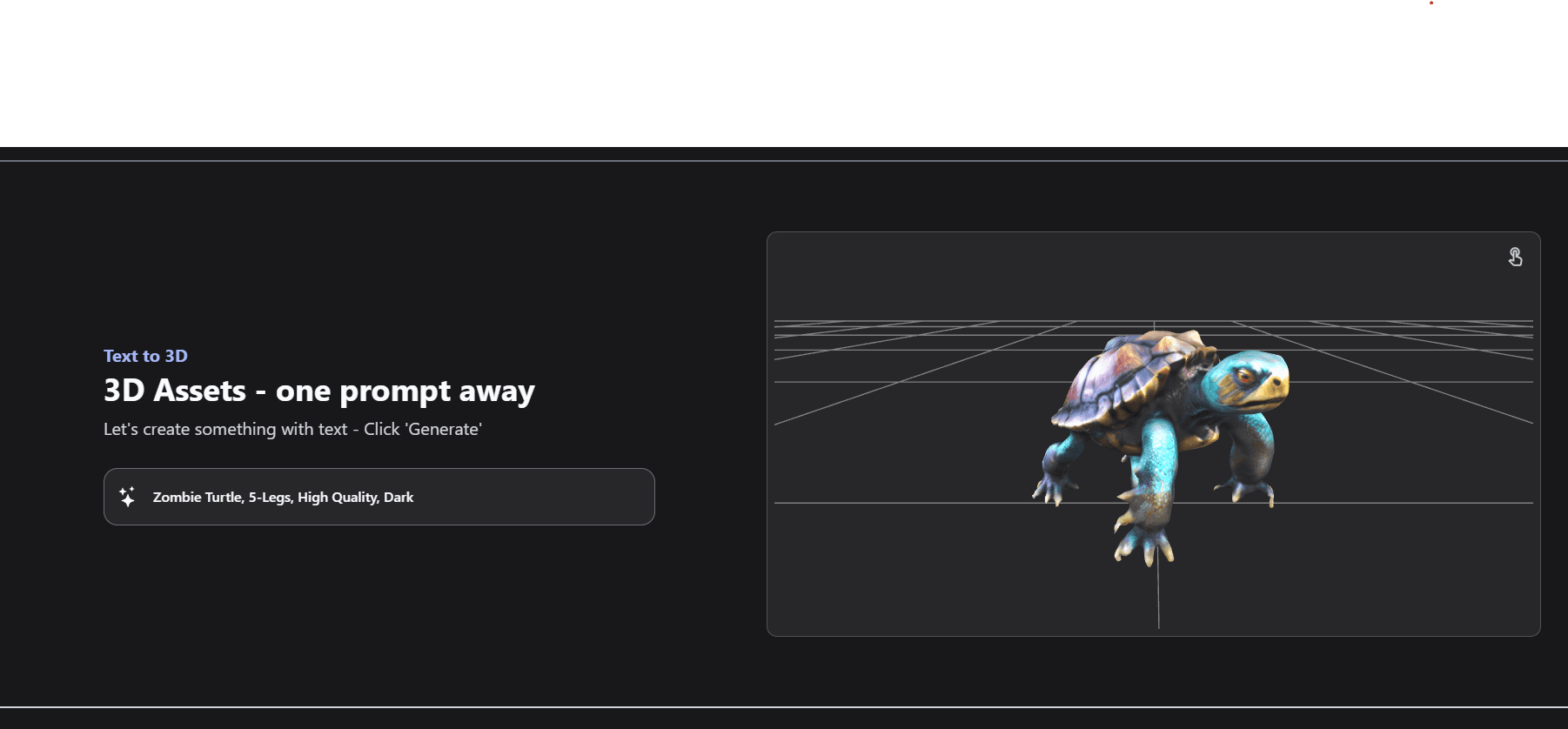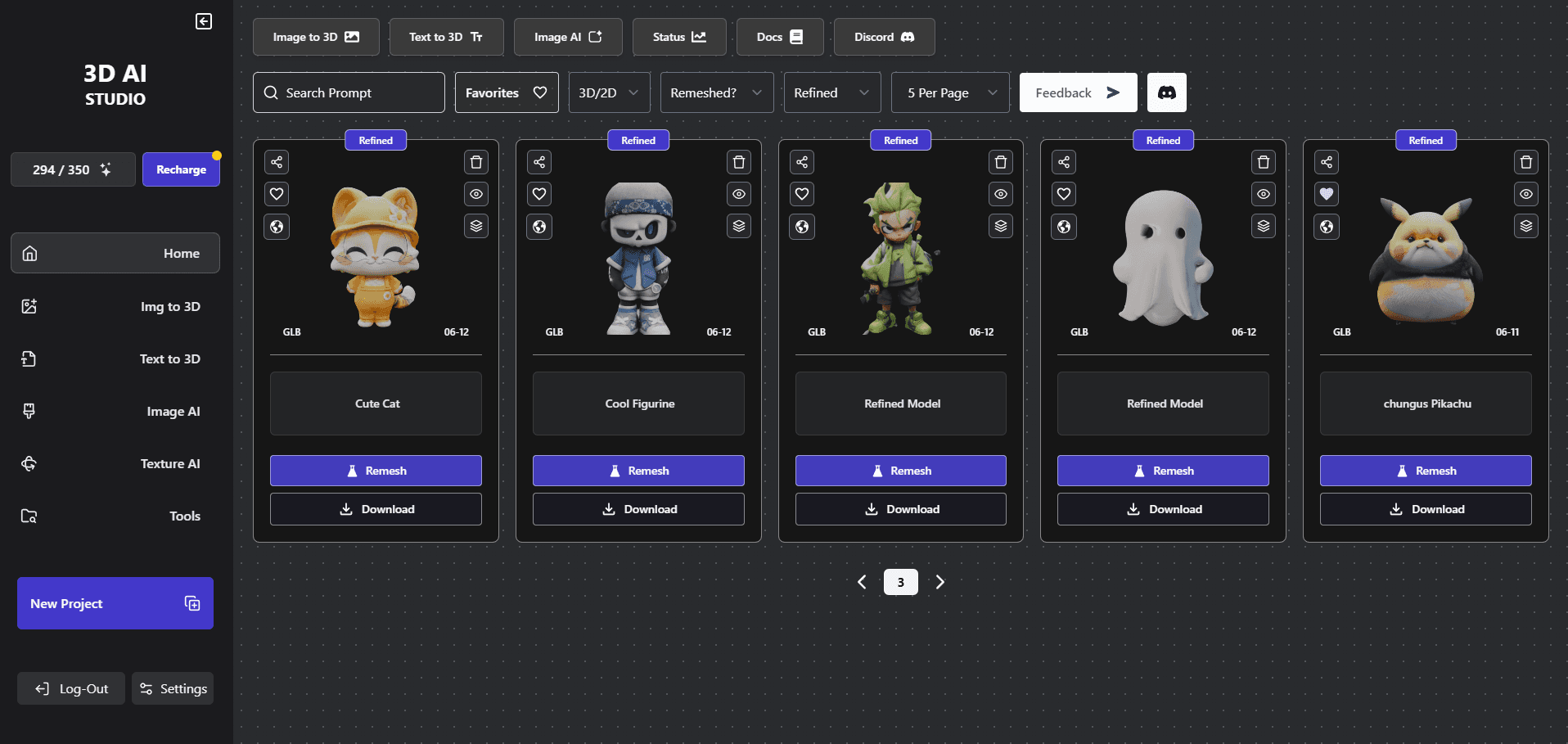5 Pro Tips for 3D Designers: Mastering AR-Ready 3D Models
Augmented Reality (AR) is revolutionizing how we interact with digital content in the real world. For 3D designers, this opens up exciting new possibilities – and challenges. To help you navigate this terrain, we've compiled five pro tips to get you started with designing 3D models for AR. Let's dive in!
1. Master the Right File Formats for AR
When creating 3D models for AR, two file formats reign supreme:
- USDZ: Used primarily for iOS AR experiences
- GLB/glTF: The standard for Android and web-based AR
3D AI Studio supports exporting to both these formats, making it easy to create AR-ready models. When exporting:
- Ensure your textures are properly embedded
- Check that animations (if any) are correctly baked into the file
- Verify that materials render correctly in AR viewers

2. Optimize for Real-World Scale
In AR, your 3D models need to look right in the real world. Here's how to nail the scale:
- Always model using real-world units (meters or centimeters)
- Use reference objects in your 3D software to gauge size
- Test your models in AR viewers frequently to ensure proper scaling
Pro Tip: In 3D AI Studio, you can specify the desired scale of your model during the generation process, saving time on manual adjustments.
3. Prioritize Performance Optimization
AR experiences need to run smoothly on mobile devices. Keep these optimization tips in mind:
- Aim for a polygon count under 100k for most models
- Use texture atlases to reduce draw calls
- Limit texture resolution to 2048x2048 or lower
- Employ LOD (Level of Detail) techniques for complex models
Remember, a well-optimized model that runs smoothly is better than a highly detailed one that lags in AR.
4. Enhance Visual Quality Within Constraints
Creating visually appealing AR models within technical constraints is an art. Here are some tips:
- Use normal maps to add detail without increasing polygon count
- Employ PBR (Physically Based Rendering) materials for realistic looks
- Bake lighting information into textures where possible
- Use alpha channels in textures for transparency instead of geometry
5. Test, Test, and Test Again
The key to successful AR models is thorough testing. Here's how to do it right:
- Use AR-specific viewers like Apple's Reality Composer or Google's Model Viewer
- Test on multiple devices with different capabilities
- Check your model in various lighting conditions
- Gather feedback from users unfamiliar with your design

Bonus Tip: Leverage AI for Rapid Prototyping
Tools like 3D AI Studio are changing the game for AR design. By using AI-powered 3D model generation, you can:
- Quickly create base models for AR experiences
- Experiment with different designs rapidly
- Focus more on AR-specific optimizations and less on initial modeling
Conclusion
Designing 3D models for AR presents unique challenges, but with these tips, you're well on your way to creating stunning AR experiences. Remember to always keep the end-user experience in mind, optimize for performance, and leverage cutting-edge tools like 3D AI Studio to streamline your workflow.
As AR technology continues to evolve, stay curious and keep experimenting. The future of AR is bright, and skilled 3D designers like you are at the forefront of this exciting field. Happy modeling!
Generate 3D models with AI
Easily generate custom 3d models in seconds. Try it now and see your creativity come to life effortlessly!